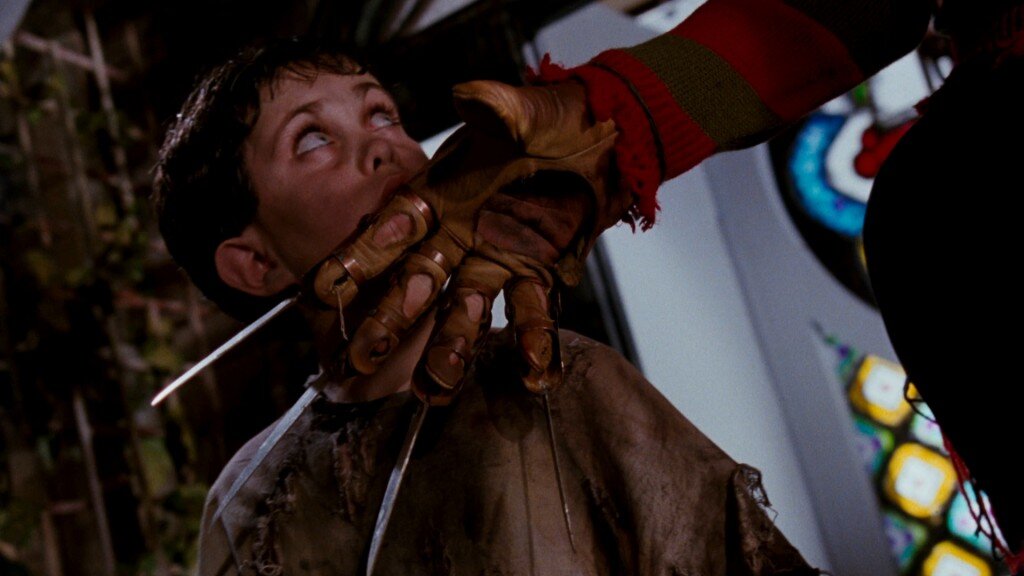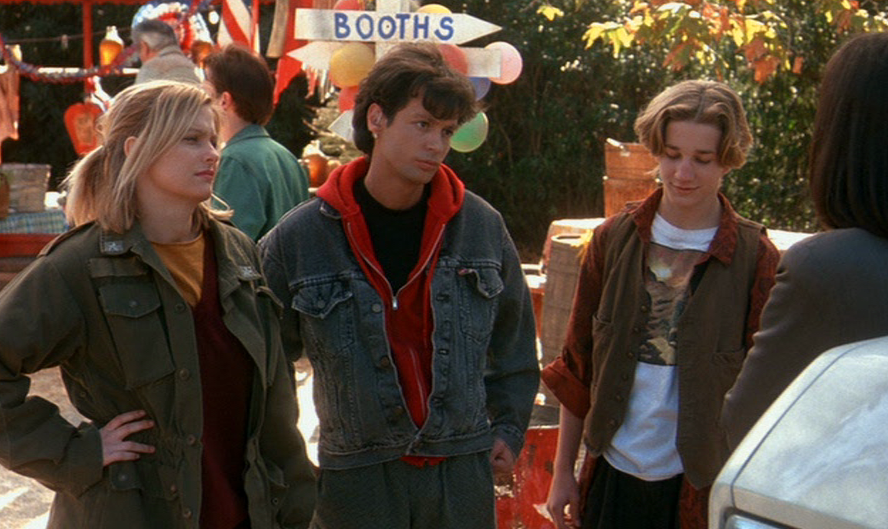What is the Scariest Freddy Krueger Movie?
There are nine films featuring the finger-bladed Nightmare on Elm Street killer, Freddy Krueger. Out of the nine films, some performed better at the box office than others, and some were ultimately scarier than others. And while Freddy Krueger may always draw a crowd…he was much more entertaining in some films. Some of the special effects and changes in production throughout the Nightmare on Elm Street movies have contributed to varying levels of terror felt within the audience. And they can be ranked!
Ranking the Nightmare on Elm Street Movies by Scariest Movie
Freddy Krueger always comes back, which is why there are so many Nightmare on Elm Street movies! So without further ado, Horror Enthusiast ranks the Nightmare on Elm Street movies in order of scariest to least scary.
A Nightmare on Elm Street (1984)
#1 Scariest Nightmare on Elm Street Movie
It is truly hard to beat an original. The original Nightmare on Elm Street was revolutionary. Wes Craven (the director and writer) and Robert Englund (Freddy Krueger actor) made the horror slasher an instant icon. This movie offers the least effects of any of the movies…but Horror Enthusiast ranks this film, by far, the scariest of them all.
Wes Craven’s New Nightmare (1994)
2nd Scariest Nightmare on Elm Street Movie
Returning to write and direct A New Nightmare, Wes Craven built a brilliant, real-life Freddy Krueger. In this movie, the real life actors from the original film experience the fictional character, Freddy Krueger, breaking into their real world. This movie made Freddy Krueger more real than ever before and absolutely secured its place as the second scariest Nightmare on Elm Street film in the franchise.
A Nightmare on Elm Street 3: Dream Warriors (1987)
3rd Scariest Nightmare on Elm Street Movie
This D&D-like edition to the Nightmare series was absolutely entertaining. With characters that had special powers to keep the audience interested in between Freddy scenes, and extremely exciting death scenes, Nightmare 3 had it all!
A Nightmare on Elm Street (2010)
4th Scariest Nightmare on Elm Street Movie
The Nightmare on Elm Street remake highlighted many aspects that made the original film so great. Character development was perfectly deep, without wasting too much time on any one character. The audience feels immersed. The chilling story line is thorough, from start of the film to finish. And Freddy Krueger (a new actor, Jackie Earle Haley) did a great job of bringing on the fear. It was not the same as the traditional Freddy Krueger, but it was admittedly pretty good!
A Nightmare on Elm Street 4: The Dream Master (1988)
5th Scariest Nightmare on Elm Street Movie
The fourth movie in the franchise is decent. In “Dream Warrior” fashion, the idea of the characters having powers in their dreams is still an important part of the plot. Freddy Krueger takes out nearly everyone in this movie in spectacular, terrifying fashion…hunting the heroine for last and solidly securing the 5th scariest Nightmare on Elm Street rank!
A Nightmare on Elm Street 5: The Dream Child (1989)

6th Scariest Nightmare on Elm Street Movie
This movie simply wasn’t as scary as the better half of the Nightmare on Elm Street movies. It was meant to be scary, but seemed to drain an already dying story line. The movie is a little weird, focusing on the fetus of pregnant fourth movie heroine, Alice. Weird is not exactly scary, maybe creepy, but not nearly as scary as the other movies.
A Nightmare on Elm Street 2: Freddy’s Revenge (1985)
7th Scariest Nightmare on Elm Street Movie
This movie received mixed reviews. Some fans claimed it was attempting to push gay rights. Ultimately, however, it did not seem as scary as the other films. The emphasis on the characters was too great and the audience mostly lost track of the horror slasher in between his appearances altogether.
Freddy’s Dead: The Final Nightmare (1991)
8th Scariest Nightmare on Elm Street Movie
Literally, Freddy’s Dead was an attempt to ride the franchise into the grave: this film was meant to be the last Nightmare on Elm Street movie. It was also one of the least scariest. The production quality felt cheesy and rather crude. The series seem to be relying more on Freddy’s humor than ever before. Freddy Krueger comedy is good, but Freddy Krueger scary is better!
Freddy vs Jason (2003)

9th Scariest Nightmare on Elm Street Movie
Although Freddy vs Jason was a whole new level of excitement for the fans, it was ultimately much less scary than the other films. The cinematic effects were focused on building the anticipation of the fight between the two horror slashers. The story line may have provided a few victims, but ultimately, it was all centered on pitting the two horror movie killers against one another. Even with Jason Voorhees making appearances throughout the film, it is simply less scary than the true Nightmare on Elm Street films.
Freddy Krueger is Always Scary
Whether the movie is the scariest in the franchise or not, every Nightmare on Elm Street movie features a fantastic Freddy Krueger. And even the weakest movies in the franchise offer a strongly entertaining death scenes and Freddy’s quirky sense of humor. As one of the smarter horror movie slashers, Freddy has held the limelight throughout all of his movies. All of the Nightmare on Elm Street movies have a unique feel that cannot be ignored: they are simply some of the best horror movies to grace the industry!

Tritone’s love of horror and mystery began at a young age. Growing up in the 80’s he got to see some of the greatest horror movies play out in the best of venues, the drive-in theater. That’s when his obsession with the genre really began—but it wasn’t just the movies, it was the games, the books, the comics, and the lore behind it all that really ignited his obsession. Tritone is a published author and continues to write and write about horror whenever possible.
